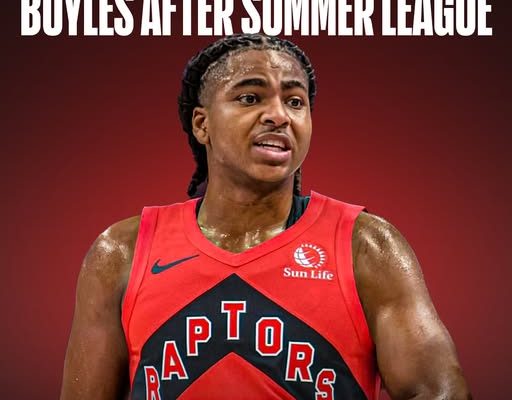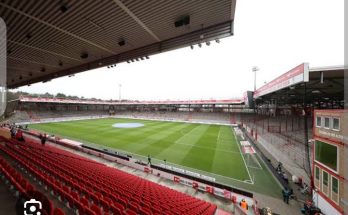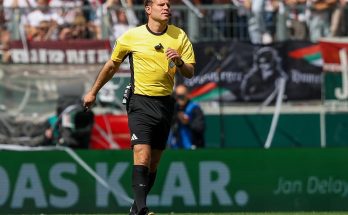In the ever-fluid world of NBA roster building and prospect development, Summer League has become the unofficial barometer of early talent, a testing ground where young players can either validate front-office decisions or expose lingering doubts. For the Toronto Raptors, their 2025 Summer League campaign featured plenty of intriguing storylines, none more captivating than the emergence of rookie Collin Murray-Boyles. Drafted in the second round out of South Carolina, Murray-Boyles didn’t come into Las Vegas with the hype of a lottery pick, nor was he expected to carry much weight in terms of rotation impact. But it didn’t take long for fans and analysts to start buzzing about his potential after he strung together a series of impressive performances that showcased versatility, athleticism, and flashes of a well-rounded two-way game. However, just as quickly as his star began to rise, concerns have begun to surface—concerns that are painting a more complicated picture of Murray-Boyles’ fit with the Raptors’ long-term vision. And for a fanbase eager to turn the corner after two disappointing seasons, the news coming out might not be what they hoped to hear.
The allure of Murray-Boyles during Summer League was undeniable. Standing at 6’7” with a chiseled frame, impressive wingspan, and a relentless motor, he looked the part of a modern hybrid forward—a player capable of switching on defense, rebounding in traffic, finishing through contact, and making plays in the open floor. His stat lines were solid if not spectacular, averaging 12.4 points, 7.3 rebounds, and 2.1 assists over five games, but the value he brought to the floor often went beyond the numbers. He made hustle plays, rotated well on defense, and generally seemed more polished than expected for a second-round rookie with just one year of college ball under his belt. Toronto fans, who’ve endured a couple of seasons filled with uncertainty, roster churn, and a lack of defined identity, saw a glimmer of something foundational in him. For a while, there was a genuine sense that the Raptors might have unearthed a gem.
But as the dust settled from Summer League and executives began conducting internal evaluations, the red flags started to creep into the conversation. Multiple sources close to the organization have indicated that while Murray-Boyles’ effort level and instincts are commendable, there are significant concerns surrounding his offensive ceiling and basketball IQ. During Summer League, several scouts pointed out that he often looked lost in halfcourt sets, struggled with spacing decisions, and hesitated when asked to make reads under pressure. These tendencies were somewhat masked in the more free-flowing style of Summer League play, but the Raptors’ development staff reportedly grew concerned when reviewing film and projecting how his limitations might be magnified against real NBA competition.
There are also whispers about attitude and off-court focus—nothing scandalous or overtly troubling, but a pattern of behavior that raises questions about coachability. According to at least two anonymous sources within the Raptors organization, Murray-Boyles has not always responded well to constructive criticism in practice settings and has occasionally resisted instruction from assistant coaches. These aren’t uncommon challenges for young players making the leap to the NBA, but in the context of Toronto’s current rebuild and emphasis on culture, they carry added weight. The Raptors’ front office, led by GM Bobby Webster and President Masai Ujiri, has prioritized “character-first” players in recent drafts and trades, especially following the drama and dissatisfaction that surfaced during the tail end of the Nick Nurse era. Murray-Boyles’ early signs of friction, however minor, are reportedly giving some members of the front office pause.
Further complicating matters is the awkward fit within Toronto’s existing roster. The Raptors are already loaded with forwards who possess similar skill sets but more refined NBA experience—names like Scottie Barnes, RJ Barrett, and Chris Boucher clog the pipeline at the hybrid forward spots, and all three are fighting for minutes in a rotation that will also include Gradey Dick, Jakob Poeltl, and rookie Ja’Kobe Walter. That logjam raises the question of whether there’s a viable developmental path for Murray-Boyles in the current structure. The Raptors can’t afford to give heavy developmental minutes to everyone, and there’s real debate internally about whether the investment required to mold Murray-Boyles into a reliable NBA contributor will be worth the resources—especially if his upside is capped by shooting inefficiencies and a low feel for the game.
His jump shot, in particular, has drawn heavy scrutiny. Murray-Boyles shot just 21% from beyond the arc during Summer League and 58% from the free throw line—percentages that would be unacceptable even for a defensive-minded big, let alone a wing-forward hybrid expected to operate on the perimeter. Teams increasingly require their forwards to at least be passable threats from long range to avoid stagnating halfcourt offenses. Without that ability, spacing breaks down, driving lanes close up, and offensive schemes get clogged. Toronto’s coaching staff has reportedly tried tweaking his shot mechanics, emphasizing rhythm and release timing, but the results in practice have been inconsistent at best. This brings up the troubling scenario where Murray-Boyles is relegated to a non-shooting role in an already offensively-challenged rotation—a situation Raptors fans know all too well from the development paths of players like Stanley Johnson and Rondae Hollis-Jefferson in years past.
There’s also the question of Murray-Boyles’ decision-making and passing vision. While he has flashed the ability to make reads in transition or dish off dump passes on drives, his halfcourt reads have been questionable. He tends to over-dribble, sometimes driving into traffic without a clear plan, and has been turnover-prone when pressured by smarter defenders. These tendencies have led to a perception among some scouts that he might ultimately be more of a tweener—a player without a clearly defined position or elite NBA skill to hang his hat on. If he can’t shoot, can’t run point-forward actions, and isn’t big enough to guard traditional centers or fast enough to guard elite wings, where exactly does he fit?



